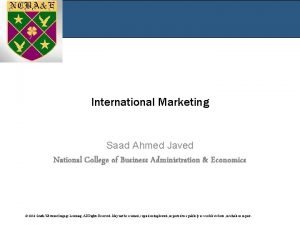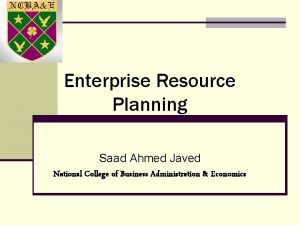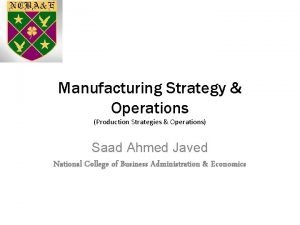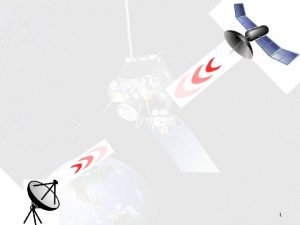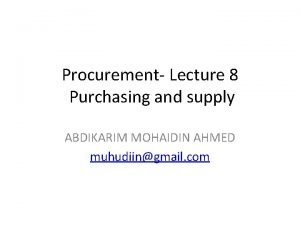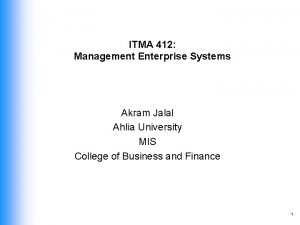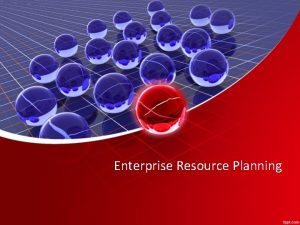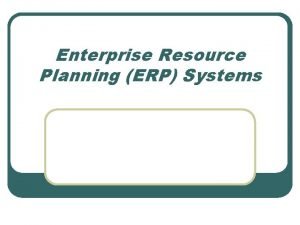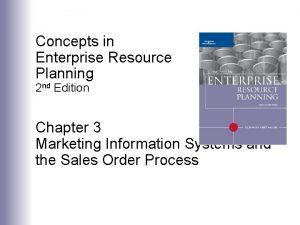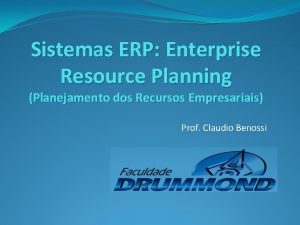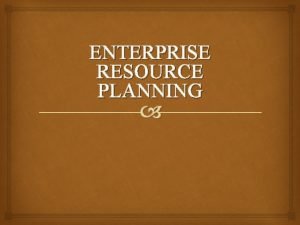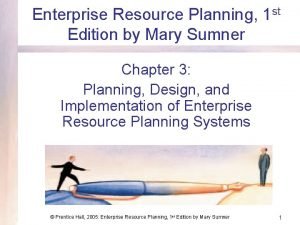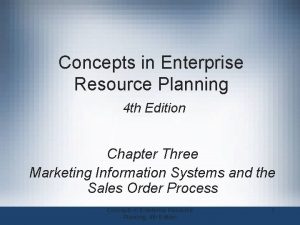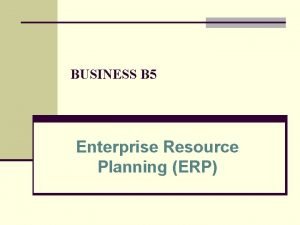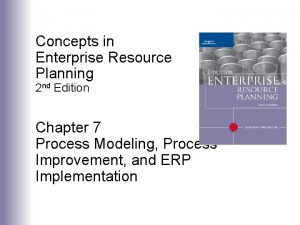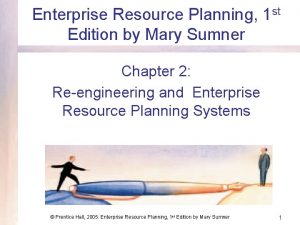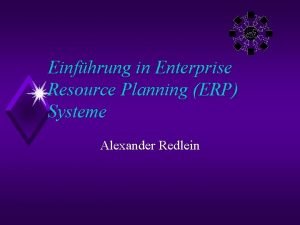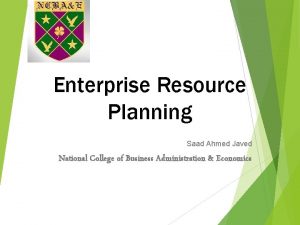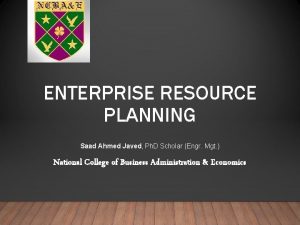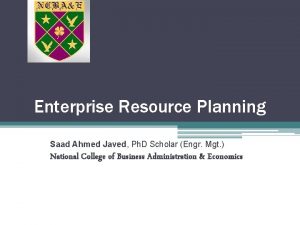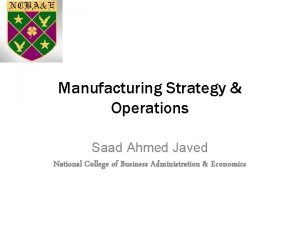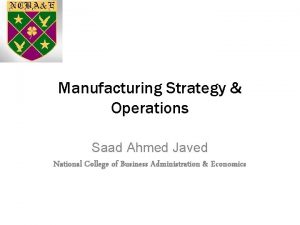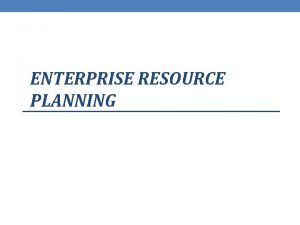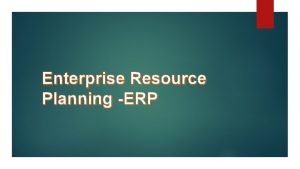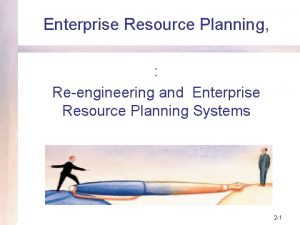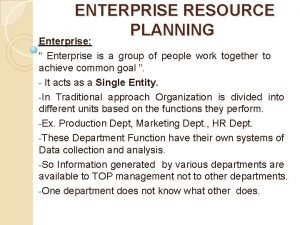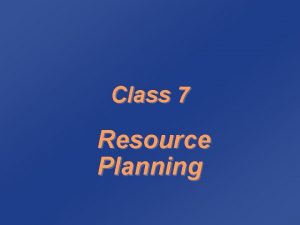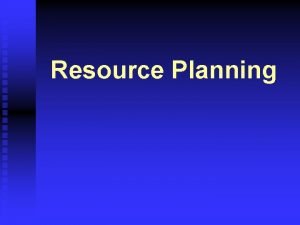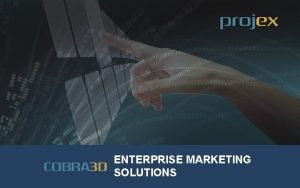Enterprise Resource Planning Saad Ahmed Javed National College



















- Slides: 19

Enterprise Resource Planning Saad Ahmed Javed National College of Business Administration & Economics

ERP IMPLEMENTATION LIFE CYCLE

Enterprise resource planning l ERP covers the technique and concepts employed for the integrated management of business as a whole, l ERP packages are integrated software packages that support the above ERP concepts.

ERP LIFE CYCLE l ERP lifecycle highlights the different stages in implementation of an ERP.

Different phases of ERP l Pre evaluation Screening l Evaluation Package l Project Planning l GAP analysis l Reengineering l Team training l Testing/ Going Live with ERP l Post implementation

Pre-selection Process Package Evaluation Project Planning Gap Analysis Reengineering Implementation Team Training Testing Going Live Post – implementation Phase ERP implementation Life Cycle Configuration End- user Training

Pre evaluation screening l Decision for perfect package l Number of ERP vendors l Screening eliminates the packages that are not at all suitable for the company’s business processes. l Selection is done on best few package available.

Package Evaluation l Package is selected on the basis of different parameter. l Test and certify the package and also check the coordination with different departments l Selected package will determine the success or failure of the project. l Examples of some packages: SAP, Oracle, People. Soft, Microsoft Dynamics etc

Cont. l Package must be user friendly l Regular up gradation should available. l Cost

Project planning l Designs the implementation process/ blueprints. l Resources are identified. l Implementation team is selected and task allocated. l Special arrangement for contingencies.

Gap analysis l Most crucial phase. l Process through which company can create a model of where they are standing now and where they want to go. l Existing Models by the vendors help the company to cover the functional gap l Analyzes corporate and business strategies

Reengineering l Implementation is going to involve a significant change in number of employees and their job responsibilities. l Process become more automated and efficient.

Team Training l Takes place along with the process of implementation. l Company trains its employees to implement and later, run the system. l Employee become self sufficient to implement the software after the vendors/consultants have left.

Testing l This phase is performed to find the weak link so that it can be rectified before its implementation.

Going Live l The work is complete, data conversion is done, databases are up and running, the configuration is complete & testing is done. l The system is officially proclaimed. l Once the system is live the old system is removed

End User Training l The employee who is going to use the system are identified and trained.

Post Implementation l This is the maintenance phase. l Employees who are trained enough to handle problems those crops up time to time. l The post implementation will need a different set of roles and skills than those with less integrated kind of systems.

l An organization can get the maximum value of these inputs if it successfully adopts and effectively uses the system.

 Saad ahmed economics
Saad ahmed economics Saad ahmed javed
Saad ahmed javed Manufacturing strategies
Manufacturing strategies Saad ahmed javed
Saad ahmed javed Ahmed muhudiin ahmed
Ahmed muhudiin ahmed Enterprise resource planning example
Enterprise resource planning example Enterprise resource planning overview
Enterprise resource planning overview Enterprise resourse planning systems
Enterprise resourse planning systems Concepts in enterprise resource planning
Concepts in enterprise resource planning Cayenta general ledger
Cayenta general ledger Enterprise resource planning tradução
Enterprise resource planning tradução Contoh enterprise resource planning
Contoh enterprise resource planning Enterprise resource planning mary sumner
Enterprise resource planning mary sumner Concepts in enterprise resource planning
Concepts in enterprise resource planning Extended enterprise resource planning
Extended enterprise resource planning Enterprise resource planning lecture notes ppt
Enterprise resource planning lecture notes ppt Fitter snacker
Fitter snacker Enterprise resource planning mary sumner
Enterprise resource planning mary sumner Personalstammdaten definition
Personalstammdaten definition Ahmed bawany academy school & college
Ahmed bawany academy school & college
